
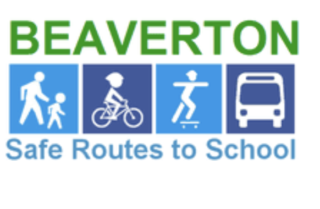
Students and parents spent more than a year dealing with the complexities of virtual learning during the pandemic. When schools went back to in-person status, families had a lot to adjust to and reconsider – including how to get to-and-from school. Throughout this adjustment period, the Beaverton School District (BSD) has worked to beef up its Safe Routes to School (SRTS) program to encourage students and parents to walk, bike, roll or take the bus to school.
BSD is the third largest district in Oregon and serves about 40,000 students at 54 schools. They recently published their 2021-2022 SRTS annual report, which gives us a chance to see how Covid impacted student transportation choices.
The more disappointing news first: just like bus ridership throughout the Portland metro area has fallen significantly throughout the pandemic, so has school bus ridership in the BSD – though not to the same extent. The BSD report says the district saw a “4% decline in bus ridership and a correlating increase in the drive rate to school, placing the average drive rate at 37%.” (By comparison, TriMet has seen almost a 50% decline in bus ridership compared to pre-pandemic rates.)
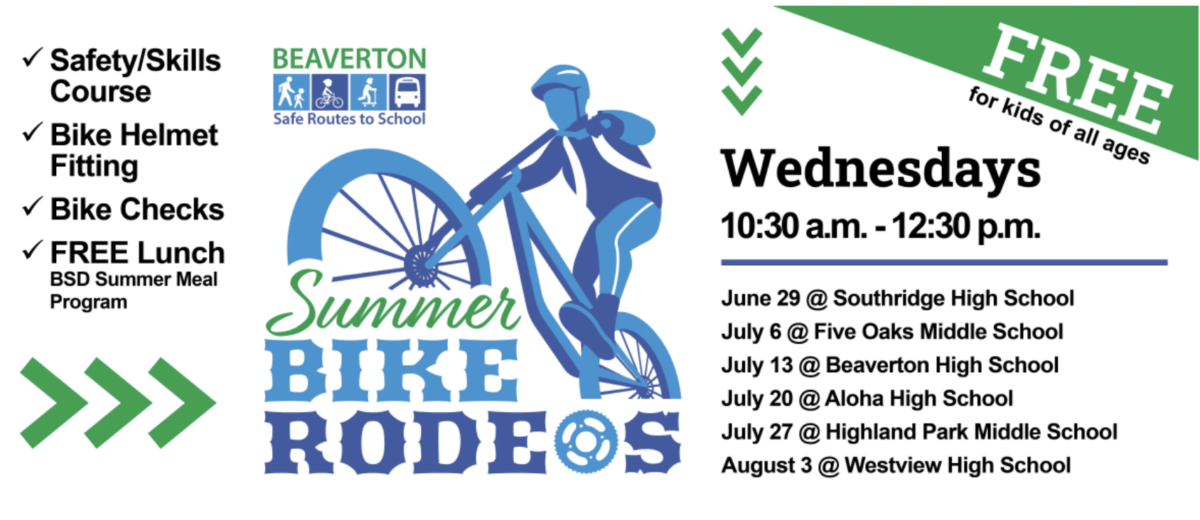
But it’s not all bad news. Students and parents appear to be more excited than ever about walking and biking to school – in 2015, only 12% of BSD students were walking and biking to school, compared with 20% in 2022.
Overall, the report is optimistic. “Schools that participate in SRTS programs, events, and education are more likely to show positive change in both parent perceptions of walking and rolling and mode shift,” the report says. “We must continue our work with the City of Beaverton and Washington County to advocate for improved conditions on preferred routes to our schools and continue to educate and encourage students and families to find alternatives to driving.”
In addition to infrastructure projects, the BSD SRTS program has taken advantage of parent volunteers to help lead groups of students walking to school (known as walking school buses), which can make it possible for kids to walk to school in areas that may be more challenging for them to navigate alone. They’ve also embarked on several educational programs that have given kids the opportunity to learn about transportation and get involved in their school communities.
One of these educational programs was a student-led anti-idle campaign to encourage parents to turn off their cars when waiting in the carpool line. They also took on a traffic safety campaign to remind neighbors and people driving cars in school zones to slow down and be aware of student commuters.
The Beaverton SRTS program isn’t stopping now. This year, Beaverton schools will receive state funding from the Oregon Department of Transportation to make the program even more robust, particularly through educational programs.
And even though school is now out for summer, students can participate in a free “summer bike rodeos” being offered six times throughout June, July and August. The program will teach kids how to ride, offer repair services, and provide free lunch and free helmets to students in need.
Check out the full report here to see more details.

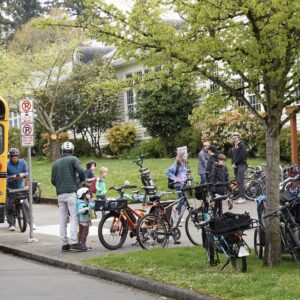

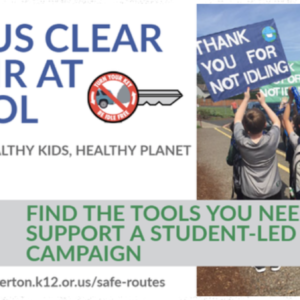
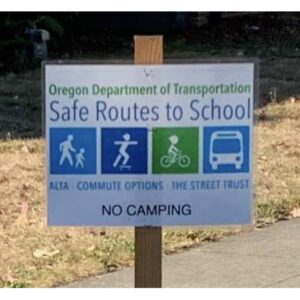
Thanks for reading.
BikePortland has served this community with independent community journalism since 2005. We rely on subscriptions from readers like you to survive. Your financial support is vital in keeping this valuable resource alive and well.
Please subscribe today to strengthen and expand our work.
As a BSD parent, I read the promotional material in our newsletters and always feel a little disappointed. The messaging is consistently victim-focused on safety. Wear bright clothes, wait for traffic to stop at crossings, etc. All valid stuff, but there is almost no information directed at the people operating vehicles that kill kids (e.g. when driving, put your phone down, pay attention at crossings and actually YIELD, SLOW DOWN during school arrival/departure hours). I’ve had fellow parents blast through the marked crossing we use as I’m crossing with my kids, perhaps because they felt people not driving are required to yield to them (as opposed to what Oregon state law says). If SRTS messaging focuses solely on biking/walking behavior, that behavior won’t change.